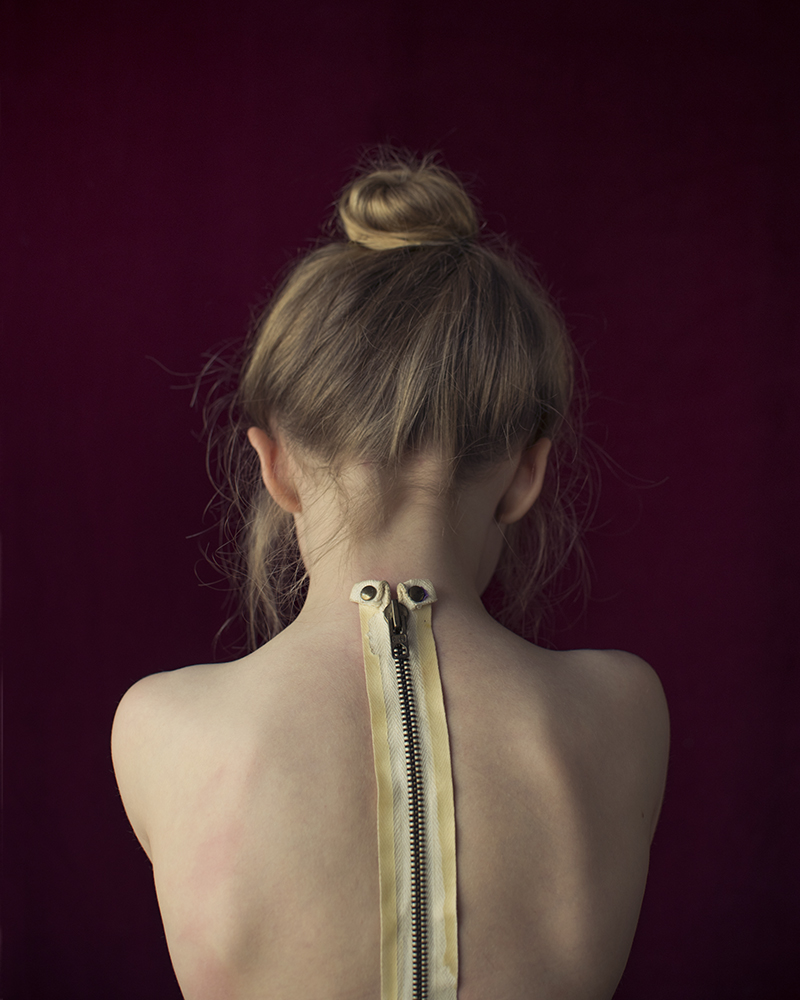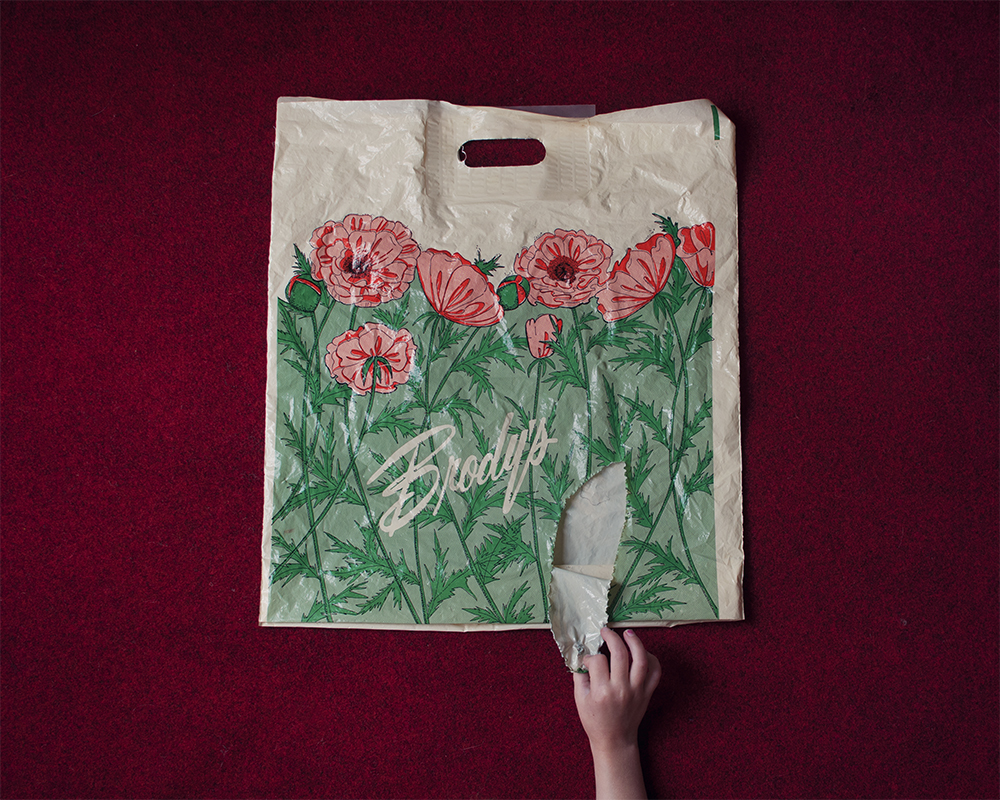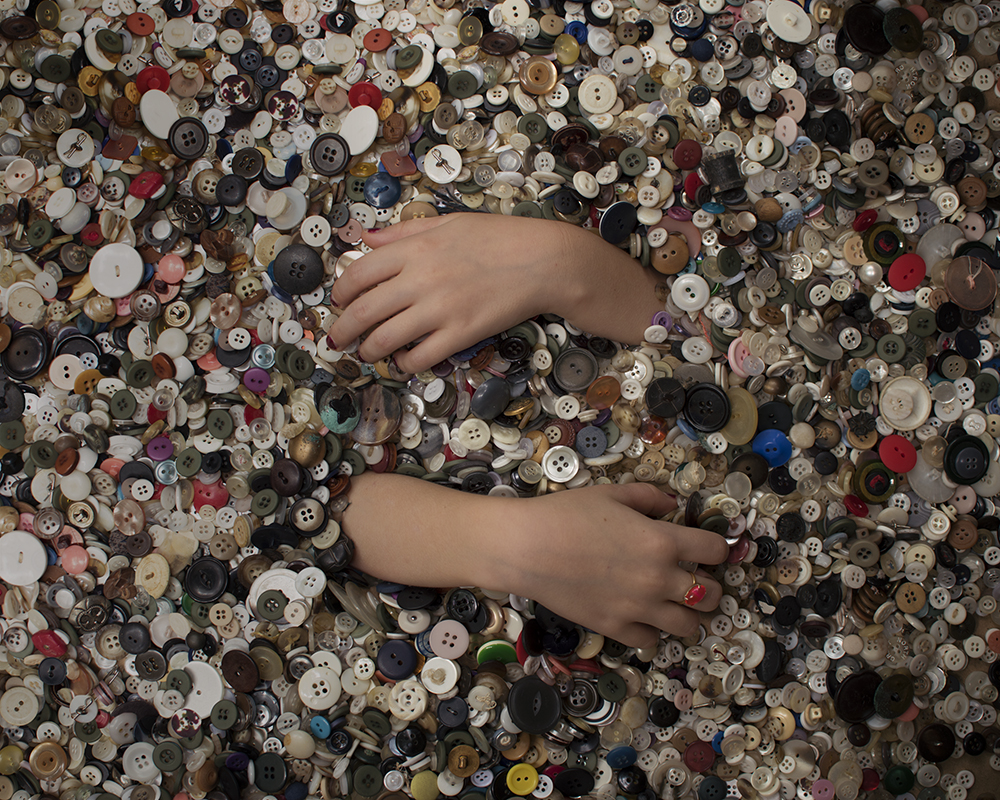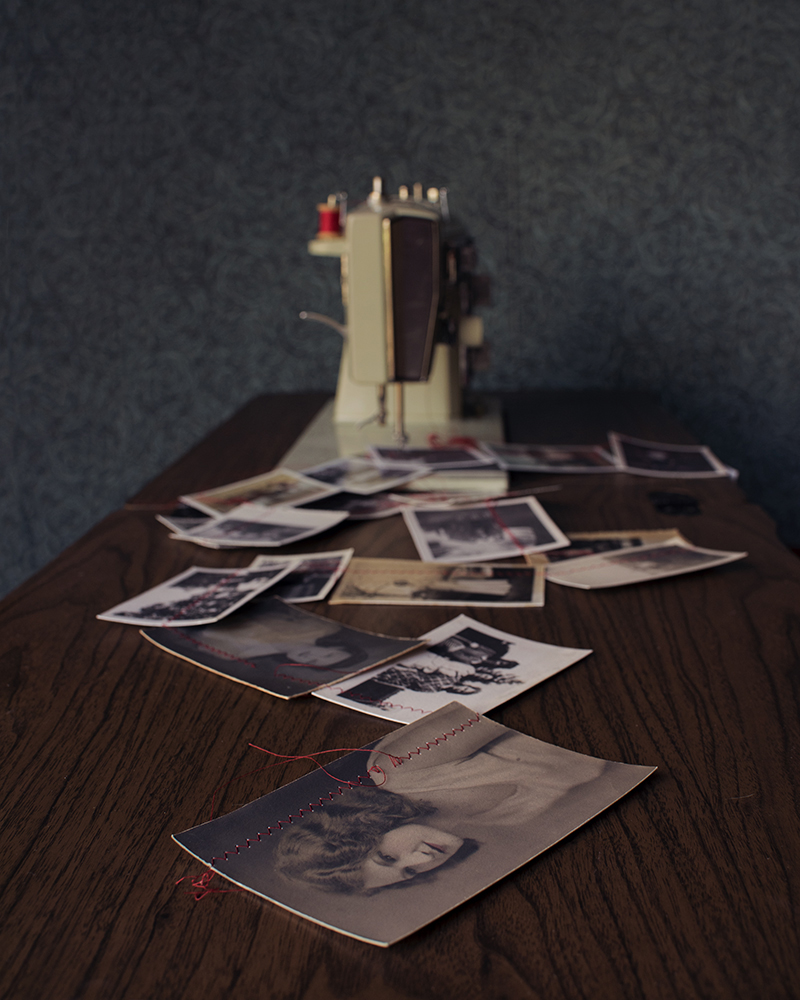Heather Evans Smith: Alterations
Wikipedia describes the word nostalgia as being “associated with a yearning for the past, its personalities, and events, especially the “good old days” or a “warm childhood”. This description fits Heather Evans Smith’s richly saturated conceptual still lifes that feel at once part of the past and present, yet it’s that combination of what once was with the beauty and fragility of youth that makes a magical pairing moving the work beyond the nostalgic she breathes new life into the ideas and objects of the past. Her most recent series, Alterations, focuses on memories of her grandmother at the sewing machine. As someone who knows her way around a needle and thread, I was immediately drawn to these beautiful ways of honoring the commemorative remembrance of person and practice.
Heather Evans Smith’s work reflects her southern roots, motherhood, womanhood and a whimsical imagination she relied on as an only child in a rural town. Smith’s work has been featured in solo and joint exhibitions internationally and nationwide, magazines, literary journals and online publications. Her awards include PDN’s The Curator and Critical Mass Top 50 in both 2014 and 2018. She has been invited as a guest lecturer at colleges, universities and photography conferences such as Australian Exposure in the Gold Coast, Australia and the Real Life photography conference in Alberta, Canada. Her first monograph, Seen Not Heard, was published by Flash Powder Projects in 2016. She lives and works in Chapel Hill, North Carolina.
Alterations
Born on her birthday, my granny was the greatest love and loss of my childhood. My fondest memories were in the alterations department in which she worked, getting lost among the whir of machines, boxes of discarded buttons and dressing rooms. It was a playground of sorts, and my most vivid memories of a relationship that ended too soon.
Growing older I’ve discovered that I knew very little about her as a person, remembering only the love that was given. These photographs serve as metaphors for the way we alter, mend, and piece together memories, in order to make sense of what we have lost.
Posts on Lenscratch may not be reproduced without the permission of the Lenscratch staff and the photographer.
Recommended
-
Nathan Bolton in Conversation with Douglas BreaultJanuary 3rd, 2026
-
Andrew Lichtenstein: This Short Life: Photojournalism as Resistance and ConcernDecember 21st, 2025
-
Martin Stranka: All My StrangersDecember 14th, 2025
-
Interview with Maja Daniels: Gertrud, Natural Phenomena, and Alternative TimelinesNovember 16th, 2025







































































